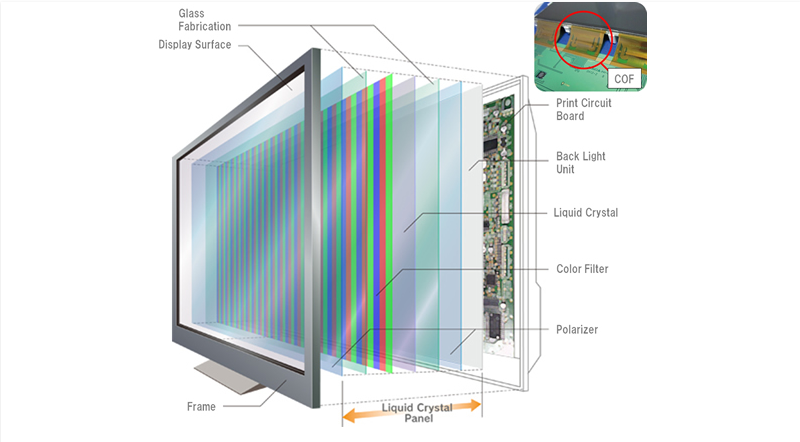The LCD full form is Liquid Crystal Display. LCD is a flat-panel display system that is now used in televisions, computers, and mobile phones. LCD is largely utilized in televisions, computers, and cell phones. Instead of cathode rays, these LCDs operate on liquid crystals.
Read Other Full Forms
LCD is composed of millions of crystal-based pixels arranged in a rectangular pattern on the LCD panel. LCD displays have backlights that illuminate each pixel. Each pixel has a red, green, and blue sub-pixel that may be turned on or off. When all subpixels are turned off, the resulting image is black, however, when all subpixels are turned on to 100%, the resulting image is white.
Construction of LCD

- LCD is a blend of liquid and solid substances.
- The crystal is the solid component, and the combination of liquid and crystal produces a clear image.
- Two polarized filters and electrodes make up the LCD’s two layers.
- LCD screen operates by blocking the light beam as opposed to emitting light.
- Active Matrix Grid and Passive Matrix Grid are the two types of LCD pixel grids.
- Active Matrix Grid is a novel technology used in LCD-screen cell phones.
- Passive Matrix Grid is an aging technology utilized by a few outdated applications.
LCD operating principles
The LCD operates according to the principle of liquid crystal color emission. LCD was first discovered in 1888. LCD is an electronically modulated optical device that has liquid crystal-filled segments. LCDs employed liquid crystals and polarized light to show images. When current is applied to LCD televisions, a broad, bright light is reflected toward the audience.
Advantages of LCD
- The LCD greatest advantage is its low cost, energy efficiency, and low energy usage.
- The LCD is more compact, thinner, and flexible.
- The LCD offers superior contrast, brightness, and resolution, so the image is as clear as crystal.
- LCD screen radiation is marginally less than CRT monitor radiation.
- With CMOS circuit boards, LCDs can be customized, making LCD production fairly simple.
List of devices using LCD
LCD is used in the various device, including,
- Calculator
- TV
- Mobile device
- Smartphones
- Laptops
- Gaming system
- Computers
- Digital clocks
LCD’s restrictions
- LCD requires external light sources to illuminate the pixels; if the light source is gone, the LCD will not show an image.
- The LCD display is less precise.
- Image visibility is dependent on luminance.
- Aspect ratio and resolution are set for LCD displays.
- LCD has an uneven intensity scale and produces fewer than 256 unique intensities.
- For LCD, the color intensity associated with a decreasing black level is diminished at a lower intensity level.
- The LCD has a limited viewing angle, and when we gaze at the screen from an angle, the brightness decreases and the color of the image alters in our eyes.

